Winter, summer, butternut, kabocha, acorn—the list goes on, but while the number of squash varieties can be daunting, most of them have similar uses. In the U.S., squash is generally grouped into summer or winter squash, depending on whether they are harvested before the rind hardens and the fruit matures.
Winter
Winter squashes are generally harvested at the end of summer, when they have reached maturity. They are characterized by thick, tough shells surrounding the inner flesh (this hard, protective coating helps give them a longer storage life than summer squash varieties). They should be stored in a cool, dry place until ready for use. Some common types of winter squash include:
Acorn. As the name suggests, this squash is shaped like an acorn. It is small with a ribbed rind that is dark green, orange, or buff-colored. The flesh is yellow or orange and, like most winter squash, full of fiber.
Try it: Roasted. Its shape and ribbing makes peeling difficult, so prepare it by cutting it in half or slicing it. Don’t worry about removing the skin, as it’s edible.Here is a great recipe for acorn squash.
Buttercup: Buttercup squashes have dark green skin, sometimes accented by lighter green streaks. The orange flesh is sweet and creamy.
Try it: Baked, mashed, pureed, steamed, simmered, or stuffed. It can often replace sweet potatoes in a recipe.
Butternut. Butternut squashes are bell-shaped with smooth, thin, pale tan skin; the orange flesh has a sweet, nutty flavor. Squashes with a long, thick neck are easiest for peeling and have the most flesh. Dense and creamy, butternut is well suited for a variety of both sweet and savory dishes. It boasts the highest doses of vitamins A and C.
Try it: Roasted and in soups. It has a smooth texture when cooked, and the flesh is juicy. Peel the skin with a potato or vegetable peeler.
Kabocha. This round, squat Japanese squash has a subtle, honeyed sweetness and a smooth, almost fiberless texture. The outside is a dark green with light green stripes; the interior is a pale orange. Kabocha is drier and denser than most squashes, but can be baked and steamed (like acorn squash) or pureed to lend a buttery richness to soups.
Try it: Roasted (with a little butter, or oil and salt) or in soup. It also pairs well with ginger and sesame.
Pumpkin. Perhaps one of the best-known winter squashes, pumpkins really need no introduction. This round variety of squash has bright orange skin and light orange flesh. Two- to eight-pound pumpkins are best for cooking purposes (larger specimens tend to be watery and less flavorful). The mellow sweetness and dense flesh of a pumpkin makes it a favorite amongst many autumn bakers.
Try it: Roasted or steamed, pureed (or just start with the canned, pureed variety—as long as it’s pure pumpkin puree, not the pie filling), and added into your recipes. Pumpkin puree has few limitations: aside from its widespread use in pies, it is also a satisfying, healthful, and delicious addition to soups, sweet breads, pancakes, risottos, and serves as a perfect filling for ravioli or pot stickers. You could even use it in place of the eggs, oil, and/or water mentioned on your box of Devil’s food cake mix for a brownie-like muffin. I like to add it to oatmeal, smoothies, and even yogurt or my morning coffee with some cinnamon and pie spices.
Spaghetti. This squash variety is yellow with an oval shape. The interior is comprised of stringy flesh that, when cooked, separates into mild-tasting, spaghetti-like strands. Larger squashes have the best flavor and thicker strands of flesh.
Try it: Roasted. It may be a little difficult to cut open at first, so microwave it about 5 minutes before cutting it in half lengthwise, scooping out the seeds, and then baking. Scrape out the strands after roasting and serve it as you would pasta, with butter and herbs or a tomato-based sauce (and maybe a little parmesan).
Summer
Summer varieties are harvested during the growing season so they are smaller than winter squash and characterized by their softer, edible skin. They are moister but don’t stay fresh as long as winter squash varieties (they last about a week in the refrigerator, whereas winter squashes can last months in the pantry), and require little to no cooking before eating. Summer squash can be grilled, steamed, boiled, sauteed, fried or used in stir-fry recipes. They also work well grated and baked into muffins or breads.
Yellow squash/yellow zucchini: Yellow squash comes in a number of varieties including crookneck, straightneck, pattypan and yellow zucchini. Crookneck squashes, as the name suggests, have a curved bottleneck while straightneck varieties are straight. Pattypan squashes are small and dreidel-shaped with scalloped edges. Their thin skin, like all summer squashes, is edible and does not require peeling. They are usually tender and mildly sweet.
Try it: Raw, steamed, grilled, fried, sautéed, baked, tossed in salads or pasta dishes.
Zucchini. Zucchini has glossy, firm dark green skin and a mild, versatile flavor. I like to think of it as the “pumpkin” of the summer squash world because of its flexibility as a recipe ingredient.
Try it: Any way you would yellow squash varieties; in lasagna, on sandwiches, in spring rolls, or grated and baked into muffins, breads and cakes.
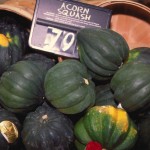
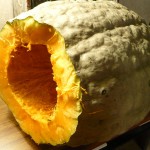
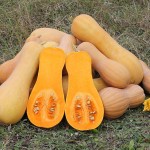
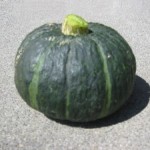
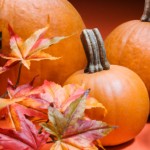
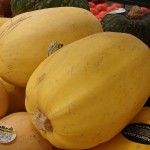
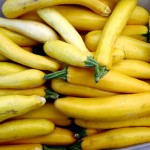
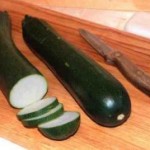
YUM! now I want some squash! 🙂
Wow, Thank you for the information.
The tip about roasting the spaghetti squash first really works!
Oh, how I miss fried yellow squash. We can't even get it here! (We fried the crooked neck variety in the south.)
It has been a long time since I have had fried yellow squash! I normally don’t eat friend food but it is soooo good!
Sadly, the only types of squash I can eat are Spaghetti and Zucchini 🙁 Kabocha is a totally new squash to me, never heard of it! Great post!
LOL! I used to hate squash! Absolutely refused to touch it! Now I find I am starting to like it, but haven't tried all of the different types yet. This really helped to teach me about all the different varieties! Thanks!
I love squash! Yellow summer squash is great either fried with butter and onions or grilled. I also love butternut squash baked with mapple and brown sugar! Oh I want some noow lol!
love squash and your post was very infomative thanks so much for sharing
What a fanastic post! Thank you for teaching me about squash!
Very nice write up! Thanks for sharing this info. Never knew all of this about squash.
Thank you for posting all this great information. I love squash and pumpkin! I also love to use it as fall decorations-it serves 2 purposes it is edible and feastive!
I never realized there are so many types of squash! Thanks for sharing 🙂
Great article- I am learning to like squash more and more. It is nice to know what kinds there are!
Looove Butternut and Spaghetti! One of my favorite winter meals is butternut stuffed with spinach and goat cheese warmed 🙂
Very informative post. We love squashes here. Lately I've been making ButterNut Squashes by baking for about 45 mins. in a shallow water bath, then pureeing with butter, brown sugar and a splash on half and half. My family loves it!
After reading your post, I want to try my hand at making a Kabocha squash and serve it with an Asian inspired dinner. 🙂
Very informative 🙂 thank you
Our kids always like the squash at the pumpkin patch more than the pumpkins! Who wouldn't with such different and vibrant colors!
Have any recipes to go with all these squash? Tehe. 😉
they look very interesting 🙂 i make really good pumpkin soup using the Kabocha
Thank you so much, I love squash its one of my favorite things about this time of the year.
I love squash, very informative article thanks!
Thank you for sharing and for all the info